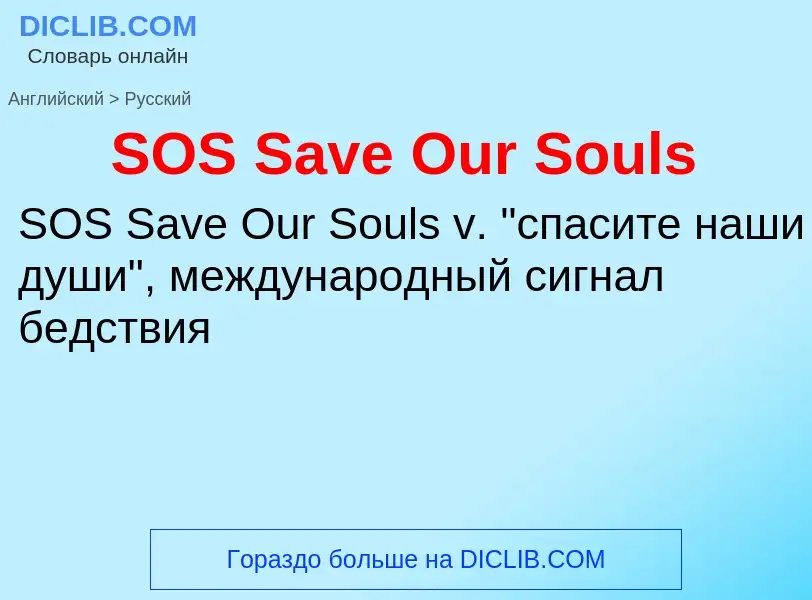Traduzione e analisi delle parole tramite l'intelligenza artificiale ChatGPT
In questa pagina puoi ottenere un'analisi dettagliata di una parola o frase, prodotta utilizzando la migliore tecnologia di intelligenza artificiale fino ad oggi:
- come viene usata la parola
- frequenza di utilizzo
- è usato più spesso nel discorso orale o scritto
- opzioni di traduzione delle parole
- esempi di utilizzo (varie frasi con traduzione)
- etimologia
SOS Save Our Souls - traduzione in Inglese
Wikipedia
SOS is a Morse code distress signal ( ▄ ▄ ▄ ▄▄▄ ▄▄▄ ▄▄▄ ▄ ▄ ▄ ), used internationally, that was originally established for maritime use. In formal notation SOS is written with an overscore line, to indicate that the Morse code equivalents for the individual letters of "SOS" are transmitted as an unbroken sequence of three dots / three dashes / three dots, with no spaces between the letters. In International Morse Code three dots form the letter "S" and three dashes make the letter "O", so "S O S" became a common way to remember the order of the dots and dashes. (IWB, VZE, 3B, and V7 form equivalent sequences, but traditionally SOS is the easiest to remember.)
SOS, when it was first agreed upon by the International Radio Telegraphic Convention in 1906, was merely a distinctive Morse code sequence and was initially not an abbreviation. Later in popular usage it became associated with mnemonic phrases such as "Save Our Souls" and "Save Our Ship". Moreover, due to its high-profile use in emergencies, the phrase "SOS" has entered general usage to informally indicate a crisis or the need for action.
SOS originated in German government maritime radio regulations adopted effective 1 April 1905. It became a worldwide standard when it was included in the service regulations of the first International Radiotelegraph Convention signed on 3 November 1906, which became effective on 1 July 1908. In modern terminology, SOS is a Morse "procedural signal" or "prosign", used as a start-of-message mark for transmissions requesting assistance when loss of life or catastrophic loss of property is imminent. Other prefixes are used for mechanical breakdowns, requests for medical assistance, and a relayed distress signal originally sent by another station. SOS remained the maritime radio distress signal until 1999, when it was replaced by the Global Maritime Distress and Safety System.
SOS is still recognized as a standard distress signal that may be used with any signaling method. It has been used as a visual distress signal, consisting of three short/three long/three short flashes of light, such as from a survival mirror. In some cases the individual letters "S O S" have been spelled out, for example, stamped in a snowbank or formed out of logs on a beach. "S O S" being readable upside down as well as right side up (as an ambigram) is an advantage for visual recognition.

.png?width=200)
![silent periods]] for receiving weak distress signals. silent periods]] for receiving weak distress signals.](https://commons.wikimedia.org/wiki/Special:FilePath/Radioroom.png?width=200)


![The phrase "God Save the King" in use as a rallying cry to the support of the monarch and the UK's forces during the [[First World War]] The phrase "God Save the King" in use as a rallying cry to the support of the monarch and the UK's forces during the [[First World War]]](https://commons.wikimedia.org/wiki/Special:FilePath/It is far better to face the bullets.jpg?width=200)
![[[Stratford-upon-Avon Town Hall]] (built 1767), bearing the painted slogan, "God Save the King". [[Stratford-upon-Avon Town Hall]] (built 1767), bearing the painted slogan, "God Save the King".](https://commons.wikimedia.org/wiki/Special:FilePath/Town Hall Stratford.jpg?width=200)
